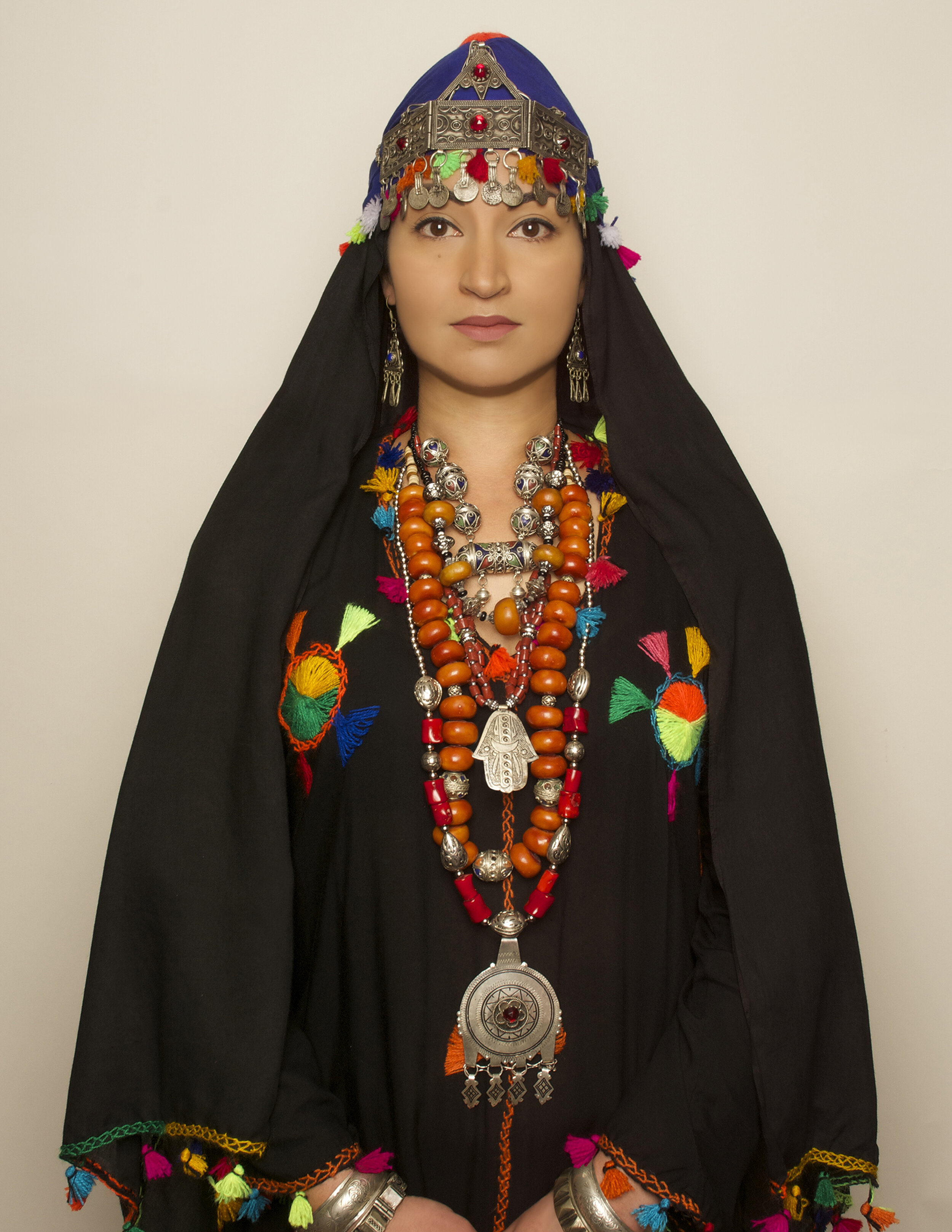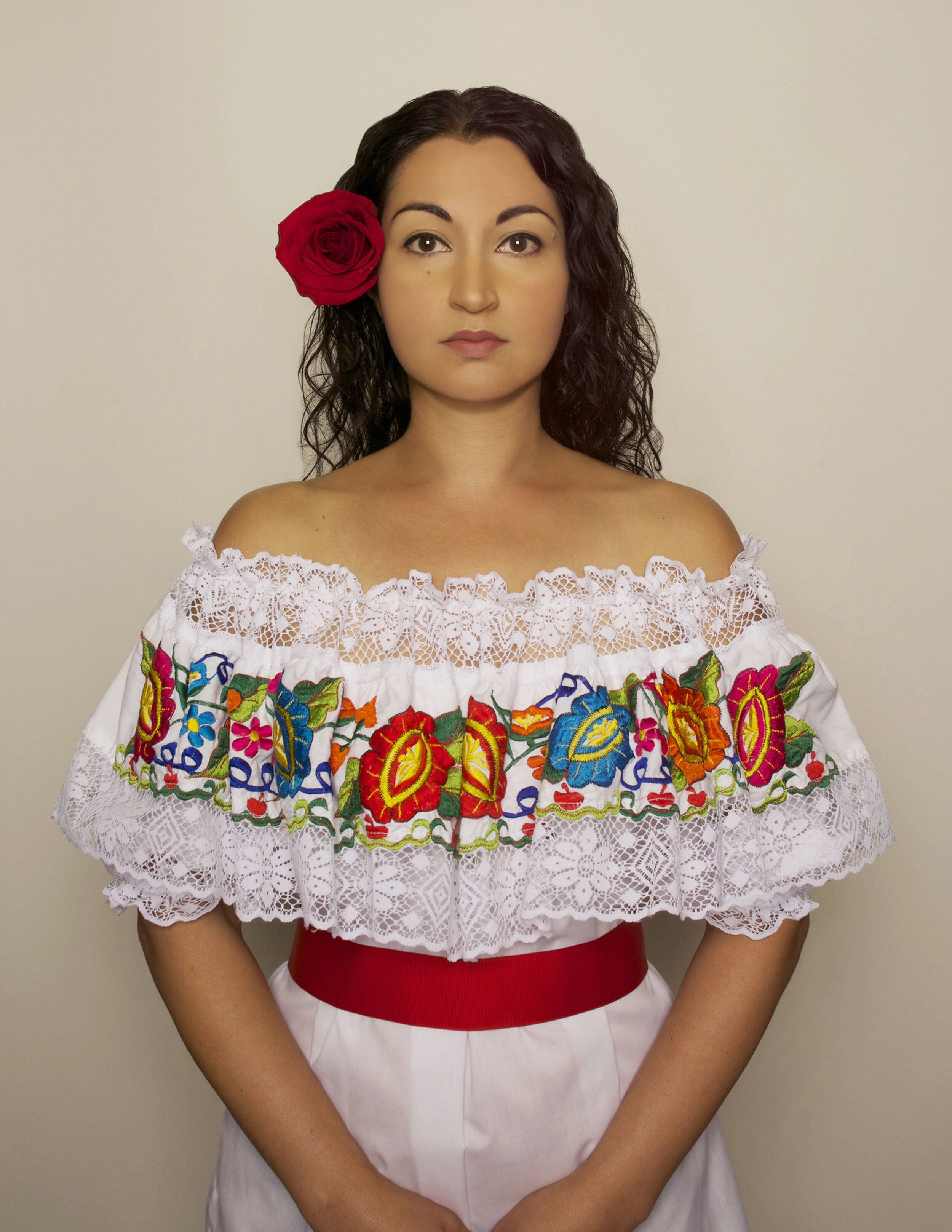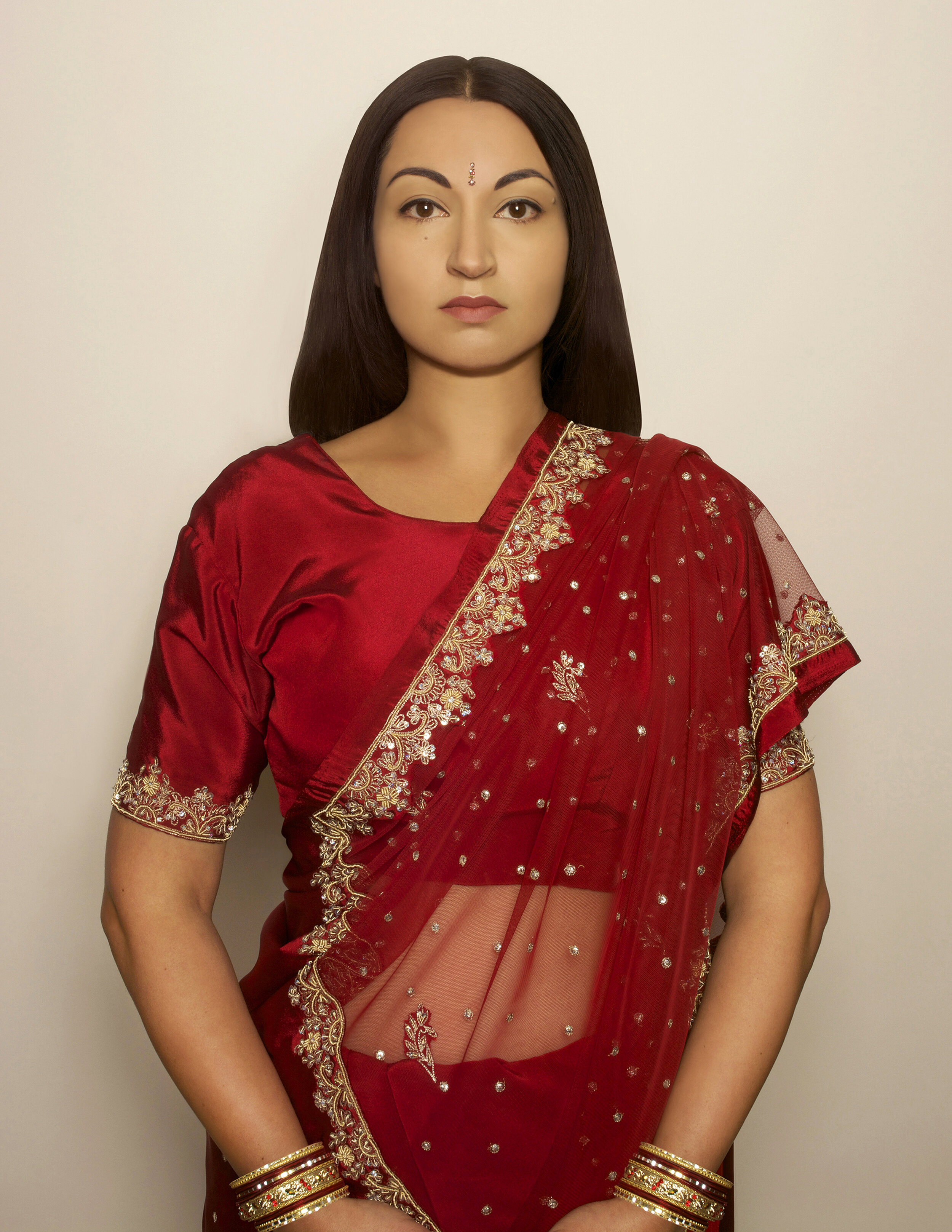Immersive Vision
X
Quadrophonic Sound Art Experience
“The ancient solfeggio tonal frequency 417Hz was used as a basis for this quadrophonic sound art piece, and is heard throughout the entire piece. The intent of this healing tone is undoing situations and facilitating change. This tone produces energy to bring about change. This frequency cleanses traumatic experiences and clears destructive influences of past events. I felt that using the healing tone as the building block to support this piece would enhance Sheinina's mission of encouraging peace and change through art. This, the exhibit truly becomes a holistic, sensory healing experience.” - Nelly Furtado
Essay on Moroccan Woman
Moroccan Woman is presented as a nomadic princess from North Africa whose tribal ancestry is widely known as Berber. Originally tribal women would tattoo their face but due to the fact that tattooing is banned for the people of Islamic faith, Amazigh women resolved to cultural expression through embroidery. The bright colored patterns that fan out over the breasts are believed to effectively ward off negative energy. A draping shawl offers protection from the blazing sun and harsh winds that pelt raw elements. As a show of love and wealth many necklaces trickled down the chest, each with an endearing reference. For example, the egg shapes that represent fertility along with the large pendant with a ruby red stone centered is another means of warding off negative energy.
Essay on Mexican Woman
The pure white 100% cotton is a staple fabric that is woven into a Huipil, a tunic-like garment. This garment is then worn in different regions throughout Mexico. The square design serves as a perfect blank canvas to eloquently stitched silk threads spiraling into geometric shapes. Vibrant colored flowers bloom from a rooted vine that graces the neckline. White ribbon interwoven delicately grasps the shoulders to support the lace that flourishes out. There is a unique correspondence in the palette of color that adorns Mexican Woman with the national flag of Mexico. With a profound history of European and North American invasion, patriotism can be found with the multitude of colors in the garment. Green representing hope, white an expression of purity and red in honor of the lives of natives who fought for the Mexico’s independence.
Essay on Indian Woman
The inherent influence from Persian artisans can be appreciated in the hand sown designs. Traditionally a petticoat is worn and tied quite tight with a thick piece of string. The sari is wrapped around the body and then securely tucked into the waistline. It is then pleated in the front, tucked and then wrapped again around the waist before crossing over the chest to finally drape over the shoulder. A bindi, a colored dot worn on the center of the forehead, is placed over the 3rd eye and is traditionally recognized as a symbol of enlightenment but a black dot placed on the fore- head is to ward off evil spirits. Bracelets are traditionally worn with colors that match the sari and are always identical on both wrists. They make a distinct chiming sound with any slight movement.
Essay on Hawaiian Woman
The white kappa skirt worn by Hawaiian Woman is considered a sign of purity. It is made from beating the bark of the native Mele tree. Leis placed around the head, neck, and wrists evolved from when Lei’s were placed around the neck of Pele, the fire goddess. The minimal covering that revealed the body during this authentic dance was considered appalling to Christian missionaries who settled in Hawaii during the 18th century. Christianized royalty eventually gave way to the pressure of the church and banned the dance and traditional wear. Women were forced to wear clothes that covered most of their body. The Hula dance did not resurface until some 50 years later when King Kalakaua lifted the ban.




